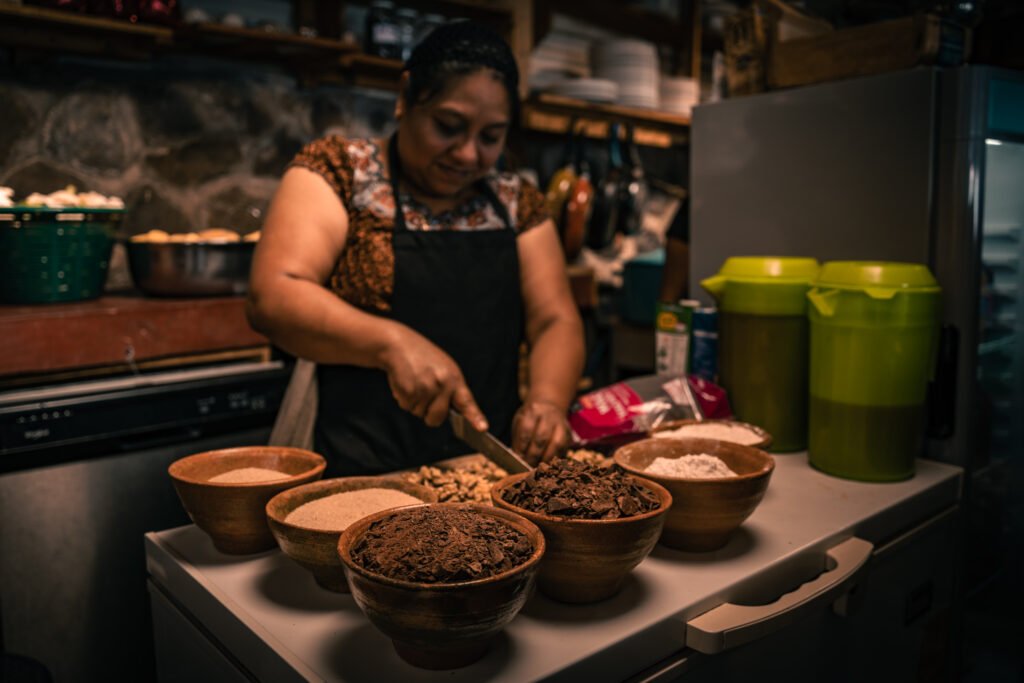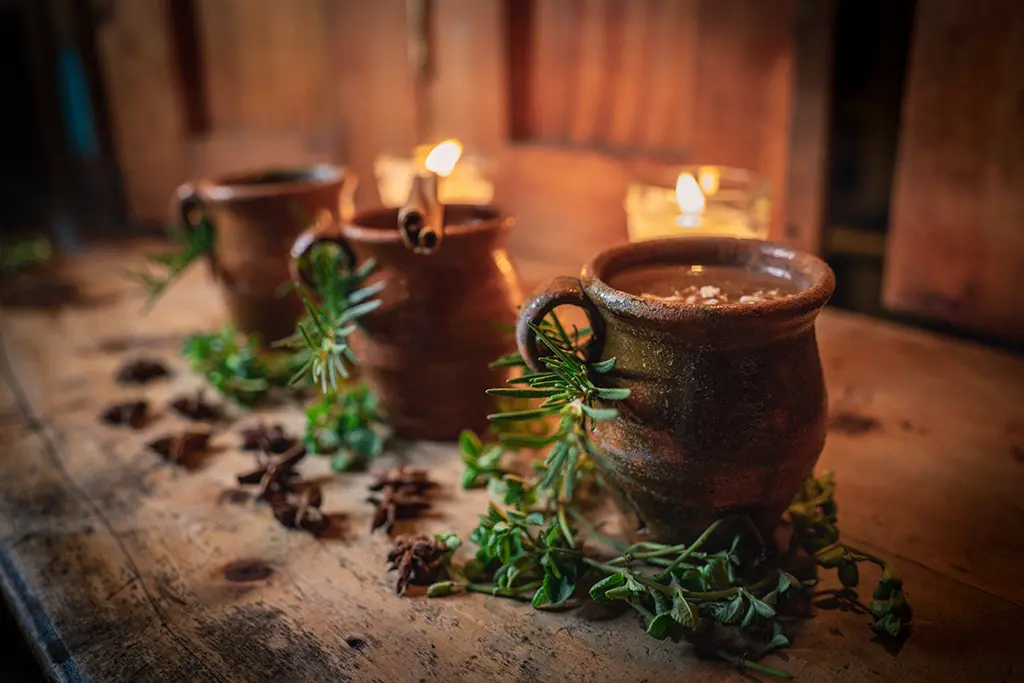Exquisite Flavors Unveiled: Comparing the Top 8 Amazing Cuisines of Guatemala vs El Salvador

Gastronomic Histories: Roots of Guatemalan and Salvadoran Foods
Exploring the gastronomic histories of Guatemala and El Salvador means delving into a tapestry of flavors shaped by ancient civilizations and colonial encounters. Both countries have developed their unique culinary identities, deeply rooted in the practices and ingredients introduced by their indigenous populations and transformed through the influence of Spanish colonization. In Guatemala, the influence of the Mayans is particularly prominent, while El Salvador exhibits a synergy of native and Spanish tastes. Understanding the origins of these cuisines provides insight into not just their food but their culture, history, and the people themselves.
Influence of Ancient Civilizations on Guatemalan Cuisine
Guatemala’s cuisine is a testament to the rich legacy of the Mayan people, woven into every fiber of the nation’s culinary fabric. The ancient Mayans formulated agricultural techniques still in use today, nurturing crops that now form the cornerstone of Guatemalan dishes. Heirloom varieties of maize, beans, and chili peppers, cultivated over millennia, have maintained their place at the dinner table while also encapsulating the harmony between the country’s ancient past and its present.
The Salvadoran Diet: A Blend of Indigenous and Spanish Tastes
El Salvador’s gastronomic heritage boasts a fusion where indigenous techniques and flavors meld with Spanish colonial influences. The union has fermented a distinct culinary identity, one that cherishes the earthy textures of native ingredients, such as salvadoran beans and loroco, as much as it venerates the old-world additions of pigs and cattle introduced by European settlers. This blend is a culinary dance of rich histories – celebrating the resilient culture of its indigenous people and echoes of a colonial past.
Culinary Staples: Key Ingredients in Salvadoran and Guatemalan Dishes
The key ingredients in Salvadoran and Guatemalan dishes serve as foundational elements that define and differentiate their cuisines. Corn, in particular, plays a central role in many traditional recipes, its importance echoing through the ages. Beyond this vital crop, a rich palette of spices, herbs, and native produce contributes to the regional flavor profiles. Whether through the complex spice blend of recado in Guatemala or the bright zest of lime in Salvadoran cooking, these staples are a testament to the rich biodiversity and cultural heritage of the region.
The Role of Corn in Central American Cooking
Maize, the golden staple of Central America, is the silent backbone of many traditional Guatemalan and Salvadoran meals. This ancient grain is more than just sustenance; it’s the architectural medium for a plethora of dishes. Nixtamalization, a millenary process, renders the maize digestible and forms the meal base for tortillas, tamales, and atoles, connecting every meal to the earth and the hands that molded it.
Prominent Flavors and Spices Shaping the Regional Foods
The flavor profile of Guatemala and El Salvador’s cuisines is nothing short of an aromatic mosaic. Recado, a complex blend of spices, and herbs like cilantro, lend Guatemalan dishes a depth and earthiness. Simultaneously, Salvadoran fare employs a simpler array of seasonings, where the piquancy of chili and the brightness of lime are often enough to transport its diners to a table beneath the boughs of a chicharrero tree, amidst the bustling sounds of a San Salvador market.
Iconic Dishes: A Taste of Guatemala vs El Salvador’s Delicacies
Guatemala’s PEPiAN: A Deep Dive into the National Dish
Pepián is Guatemala’s gastronomic symphony, rich with lore and hearty flavor. This robust stew, often reserved for special occasions, is a harmonious blend of roasted seeds, chili peppers, and meats slow-cooked to tender perfection. Each spoonful tells a story – a tale of communal cooking and shared history, embodied in the layers of its complex, smoky sauce.
El Salvador’s Pupusas: Understanding the Cultural Significance
The pupusa, El Salvador’s flagship dish, is humble in its ingredients yet profound in its cultural significance. As a culinary representation of Salvadoran ingenuity, these stuffed corn cakes encapsulate the essence of the nation’s agricultural landscape. Pupusas connect families, from their creation at the griddle to their enjoyment at community festivals, signifying unity and tradition.
Street Foods Showdown: Guatemalan Antojitos vs Salvadoran Street Snacks
A spirited rivalry plays out on the streets where Guatemalan antojitos and Salvadoran snacks vie for the affection of locals and travelers alike. Street food in both countries offers a spontaneous culinary adventure into their heart and soul, providing a snapshot of daily life and regional flavors. Whether nibbled on the go or savored at a lively market, these snacks encapsulate the innovation and tradition in each bite, serving as delicious embodiments of their vibrant food cultures.
Cooking Techniques: Traditional Methods That Define Each Cuisine
It is in the traditional cooking techniques where one can witness the true artistry of Guatemalan and Salvadoran dishes. The comal is a daily fixture in kitchens, an enduring symbol of culinary continuity and community. Parallel to this, the mastery of open flame cooking in both countries heightens the robust flavors that characterize the region’s cuisine. These time-honored practices not only illustrate the skillful hand of the cook but also connect the modern table to ancestral methods and wisdom.
The Art of the Comal: Cooking Across Borders
The comal, a traditional griddle, is pivotal in defining the classic tastes of both Guatemalan and Salvadoran foods. This simple cooking surface bridges the gap between ancient culinary traditions and modern-day kitchens. From the toasting of maize for tortillas to the charring of peppers for salsa, the comal imparts a distinct charred flavor that is emblematic of Central American hearths.
Fire and Flavor: Exploring Open Flame Cooking
The allure of open flame cooking is in its primal simplicity and the complex flavors it imparts. Both Guatemalans and Salvadorans have honed the art of cooking over fire to perfection, allowing the natural essence of their fresh, local ingredients to shine through. Whether it’s grilling meats or simmering stews, the flames intensify the flavors, creating dishes steeped in the warmth of the fire.
Festive Foods: Celebratory Dishes and Their Role in National Identity
Festive foods in Guatemala and El Salvador serve as the heart of celebrations, imbuing holidays and communal gatherings with flavors that resonate with joy and cultural identity. Whether itâs the colorful array of ingredients in Guatemala’s Fiambre or the comforting familiarity of El Salvador’s pan con pavo, these dishes are more than culinary treats. They are storied recipes passed down through the ages that foster unity and perpetuate the essence of national pride during times of festivity.
Dietary Fusion: Examining the Modern Crossover of Guatemalan and Salvadoran Eats
In our increasingly interconnected world, the culinary exchange between Guatemala and El Salvador is a manifestation of their shared history and evolving tastes. As these neighboring cuisines continue to interact, they create a delicious cross-pollination of flavors and dishes. From the Salvadoran quesadilla finding a second home in Guatemala to the subtle merge of ingredients and cooking styles, this fusion enriches both gastronomies, creating novel experiences for diners and chefs alike.

Sustainable Eating: How Local Traditions Embrace Eco-Friendly Practices
The commitment to sustainable eating is a core component of both Guatemala and El Salvador’s approach to food. These countries exemplify how traditional practices and a deep respect for nature can lead to eco-friendly and sustainable culinary customs. By sticking to locally sourced ingredients, reviving ancient farming methods, and fostering community-based cooking, they do more than just minimize their environmental footprint. They also enhance the integrity and flavor of their beloved dishes while nurturing the planet for future generations.
FAQ: Questions and Answers of Comparing cuisines: Guatemala vs El Salvador
How is Guatemala different from El Salvador?
Guatemala and El Salvador, neighboring Central American countries, offer distinct cultures and histories. Guatemala boasts vast indigenous cultures, lush landscapes, and Mayan archaeological sites, while El Salvador, the smallest but densely populated, is known for vibrant urban culture and renowned surf beaches. Guatemala’s diverse economy contrasts with El Salvador’s reliance on remittances. Both nations have reconciled from past conflicts, fostering unique identities and paths to development.
What is the difference between Guatemalan and Salvadoran tamales?
Guatemalan vs Salvadoran tamales: distinct flavors, wrapping, and fillings. Guatemalan, wrapped in banana leaves, larger, moist, with varied fillings. Salvadoran, wrapped in corn husks, buttery masa, often served with curtido or tomato sauce.
What is the traditional food of El Salvador?
El Salvador’s cuisine: rich flavors, staple corn, beans, rice. Iconic pupusa, yuca frita con chicharrón, tamales. Seafood delights, soups. Explore savory traditions!
Are pupusas Guatemalan or Salvadorian?
Pupusas are a traditional dish from El Salvador. They are one of the country’s most beloved and well-known culinary exports. Pupusas are made from a thick corn dough patty that is filled with various ingredients such as cheese (quesillo), beans, chicharrón, and loroco. They are then cooked on a griddle until golden brown. Although there are variations of stuffed corn tortillas in other Latin American cuisines, including Guatemala, the pupusa is distinctly Salvadorian and holds cultural significance as a national dish.
Why are Mayan ruins important to Guatemala?
Mayan ruins are of great importance to Guatemala because they represent the rich and ancient legacy of the Maya civilization that once thrived in the region. These archaeological sites are not only historical landmarks but also centers of cultural identity for the indigenous Maya people. Sites like Tikal, Quirigua, and El Mirador are known for their impressive temple-pyramids, plazas, palaces, and intricate stone carvings that offer insight into the Mayan’s complex societal structure, advanced astronomical knowledge, and profound spiritual beliefs. These ruins attract scholars and tourists alike, making them critical for the country’s tourism industry and ongoing historical research endeavors.
What is the significance of the Mayan Calendar?
The Mayan Calendar is a complex system of timekeeping developed by the ancient Maya and is significant due to its precise calculations of astronomical events and its integral role in Mayan society. There were several calendars used by the Maya, including the Tzolk’in (a 260-day ritual calendar), the Haab’ (a 365-day solar calendar), and the Long Count, which tracks longer periods of time. The convergence of these calendars allowed the Maya to mark religious ceremonies and understand cycles of the moon, eclipses, and other celestial events. The Mayan Calendar is often celebrated for its accuracy and its cultural importance to the descendants of the Maya still living in regions such as Guatemala.
What are the key differences in climate between Guatemala and El Salvador?
Guatemala has a diverse climate due to its varying elevations and geography, including tropical rainforests in the Petén region, cooler highland climates in the central part of the country, and semiarid conditions in the eastern regions. In contrast, El Salvador has a more uniform climate; it is tropical with distinct wet and dry seasons but generally does not experience the temperature variations associated with altitude in the same way as Guatemala since it has fewer substantial highland areas. Both countries experience a wet season typically running from May to October and a dry season from November to April, but Guatemalan highlands can be significantly cooler due to their altitude.
What is the role of coffee in Guatemala’s economy?
Coffee plays a significant role in Guatemala’s economy; it is one of the country’s top export products. The high altitudes, volcanic soil, and ideal climate conditions make Guatemala well-suited for growing high-quality coffee beans, particularly the Arabica variety. Throughout history, coffee has been a major driver of economic growth in Guatemala, providing jobs for rural communities and generating significant foreign exchange. The industry faces challenges such as fluctuating global prices and the need for sustainable farming practices, but coffee remains a cornerstone of the Guatemalan economy.
How does remittances impact the economy of El Salvador?
Remittances are a major component of El Salvador’s economy, constituting one of the primary sources of income for the country. Many Salvadorans live abroad, particularly in the United States, and the money they send back home provides a vital financial lifeline that supports millions of families. These funds contribute to the everyday consumption needs and are used for education, health care, and housing, which in turn stimulate local economies. Remittances also play a critical role in balancing the country’s current account deficit. With such a dependency on this financial inflow, the Salvadoran economy can be significantly affected by economic changes in countries where Salvadorans reside, especially the United States.
Summary of Comparing cuisines: Guatemala vs El Salvador
In this culinary exploration, we delved deep into the rich tapestries of Guatemalan and Salvadoran cuisines, examining the influence of ancient civilizations and colonial Spain on their gastronomic histories. We’ve traveled through the cornfields that are the bedrock of Central American cooking, recognizing the key ingredients that color the essence of these unique, yet interconnected food cultures.
We savored the iconic dishes, like Guatemala’s hearty Pepián and El Salvador’s iconic Pupusas, each bite uncovering the layers of culture and tradition that have been meticulously woven into their national identities. Our taste buds danced along the bustling streets, where the vibrant energy of local street foods, from Guatemalan Antojitos to Salvadoran snacks, provided an unfiltered taste of daily life.
We witnessed the timeless cooking techniques, where the comal and open flame are more than just methods of preparation, but symbols of unity and shared heritage. Our feast was not only about taste but also about the festivals, where food acts as a lantern, illuminating the joys and communal spirit that bind these nations together in festivity.
As times change, we noticed the blend and crossover of these two cuisines, illustrating a testament to the ever-evolving palates and innovative spirit of their peoples. Finally, we were left with an admiration for the sustainable practices ingrained within these cultures, a testament to their respect for nature and the land that has provided them with such an exquisite array of flavors and ingredients.
In essence, the cuisines of Guatemala and El Salvador, each with their distinct flair, come together in a symphony of flavors that not only serve the palate but also tell a story—a narrative of history, heart, and the hearth from which they came. This journey, immersive and flavorful, has reaffirmed that food is not merely sustenance but a language of its own, speaking volumes about the lands from which it hails and the people who craft it with love.

Don’t know where to stay? At Eagles Nest we offer all inclusive rooms. Enjoy the included yoga classes, delicious traditional food, and breathtaking views. Book here.



